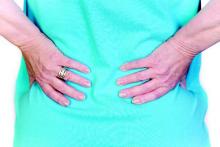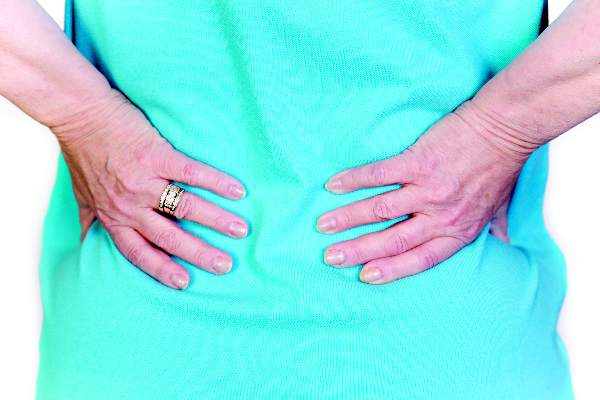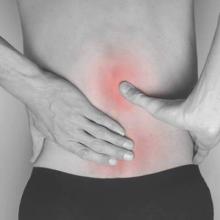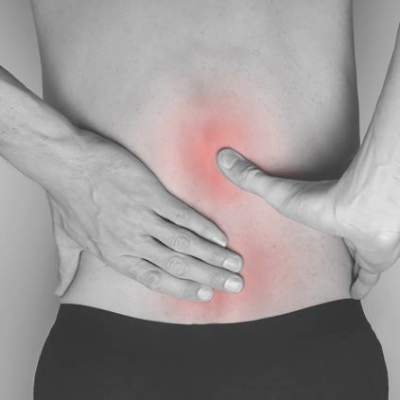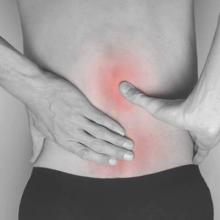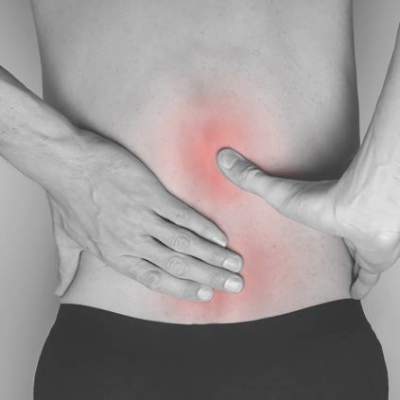User login
American Academy of Pain Management (AAPM): Annual Clinical Meeting
Pharmacogenetics could be the key to more effective opioid prescription
NATIONAL HARBOR, MD – Use of pharmacogenetic testing could be the key to increasing the effectivweness of opioids in certain patients and the overall effectiveness of therapies and treatments for chronic pain, according to Dr. Anita Gupta.
“Pharmacogenetic testing may help determine if genetic variations [can] impact the metabolism of certain medications [and] lead to unexpected outcomes, such as lack of efficacy or increased or unexpected toxicity,” explained Dr. Gupta of Drexel University in Philadelphia, citing earlier research by another investigator (Clin J Pain. 2010 Jan;26 Suppl 10:S16-20), which found that pharmacogenetic testing can help identify patients who are more likely to respond to opioid treatment, exactly which opioids would produce the most favorable responses, which patients would be at higher risks for opioid-related adverse events and drug interactions, and which patients would require higher-than-average opioid doses.
“In the near future, pharmacogenetic approaches may be implemented to best predict which medicine from the outset may be most appropriate for an individual – the therapy with the most sustained efficacy and the best side effect profile,” the investigators wrote, adding that in current clinical practice, each patient is effectively his own analgesic trial as providers try to hit a moving target as to which and how much opioid treatment is effective for each patient’s needs.
Dr. Gupta also briefly discussed findings from a similar study (Pharmacogenomics. 2009 Jul;10[7]:1157-67), in which the investigators concluded that genotyping drugs could lead to “increased efficiency in proper drug selection, dose optimization, and minimization of adverse drug reactions to improve patient outcome and safety.”
Furthermore, the study “clearly demonstrated a relationship between oxycodone steady-state drug concentrations and pain relief,” and called for more large-scale studies in order to confirm these findings and focus pain management therapy on pharmacogenetics for prescribing opioids.
The need for opioid optimization is very real, Dr. Gupta said at the annual meeting of the American Academy on Pain Medicine. According to findings from another study, about 33% of patients who take antidepressants experience little to no efficacy (Am J Psychiatry. 2006 Nov;163[11]:1905-17). The study examined long-term treatment outcomes as part of the Sequenced Treatment Alternatives to Relieve Depression (STAR*D) trial, and found that “those who required more treatment steps had higher relapse rates during the naturalistic follow-up phase,” concluding that “development of more broadly effective treatments [is] needed.”
However, questions linger as to the practical applications of pharmacogenetics, even if the science is widely accepted, Dr. Gupta said. Among the questions that still need to be answered are whether pharmacogenetic testing is reliable, whether providers will be ready and willing to use the information given to them via such testing, whether insurance companies will cover the costs of these tests, and whether tailor-made medicine can lead to discrimination or ethnic biases in treatment.
“We’re at a place where medicine is changing, and it’s an exciting time,” Dr. Gupta noted, pointing to the Human Genome Project as a tool that can be used to help with pharmacogenetics moving forward. “We have so much data overwhelming us, but the future is bright [for] patients and clinicians to improve outcomes.”
Dr. Gupta reported that she receives consulting fees from Millenium Labs.
NATIONAL HARBOR, MD – Use of pharmacogenetic testing could be the key to increasing the effectivweness of opioids in certain patients and the overall effectiveness of therapies and treatments for chronic pain, according to Dr. Anita Gupta.
“Pharmacogenetic testing may help determine if genetic variations [can] impact the metabolism of certain medications [and] lead to unexpected outcomes, such as lack of efficacy or increased or unexpected toxicity,” explained Dr. Gupta of Drexel University in Philadelphia, citing earlier research by another investigator (Clin J Pain. 2010 Jan;26 Suppl 10:S16-20), which found that pharmacogenetic testing can help identify patients who are more likely to respond to opioid treatment, exactly which opioids would produce the most favorable responses, which patients would be at higher risks for opioid-related adverse events and drug interactions, and which patients would require higher-than-average opioid doses.
“In the near future, pharmacogenetic approaches may be implemented to best predict which medicine from the outset may be most appropriate for an individual – the therapy with the most sustained efficacy and the best side effect profile,” the investigators wrote, adding that in current clinical practice, each patient is effectively his own analgesic trial as providers try to hit a moving target as to which and how much opioid treatment is effective for each patient’s needs.
Dr. Gupta also briefly discussed findings from a similar study (Pharmacogenomics. 2009 Jul;10[7]:1157-67), in which the investigators concluded that genotyping drugs could lead to “increased efficiency in proper drug selection, dose optimization, and minimization of adverse drug reactions to improve patient outcome and safety.”
Furthermore, the study “clearly demonstrated a relationship between oxycodone steady-state drug concentrations and pain relief,” and called for more large-scale studies in order to confirm these findings and focus pain management therapy on pharmacogenetics for prescribing opioids.
The need for opioid optimization is very real, Dr. Gupta said at the annual meeting of the American Academy on Pain Medicine. According to findings from another study, about 33% of patients who take antidepressants experience little to no efficacy (Am J Psychiatry. 2006 Nov;163[11]:1905-17). The study examined long-term treatment outcomes as part of the Sequenced Treatment Alternatives to Relieve Depression (STAR*D) trial, and found that “those who required more treatment steps had higher relapse rates during the naturalistic follow-up phase,” concluding that “development of more broadly effective treatments [is] needed.”
However, questions linger as to the practical applications of pharmacogenetics, even if the science is widely accepted, Dr. Gupta said. Among the questions that still need to be answered are whether pharmacogenetic testing is reliable, whether providers will be ready and willing to use the information given to them via such testing, whether insurance companies will cover the costs of these tests, and whether tailor-made medicine can lead to discrimination or ethnic biases in treatment.
“We’re at a place where medicine is changing, and it’s an exciting time,” Dr. Gupta noted, pointing to the Human Genome Project as a tool that can be used to help with pharmacogenetics moving forward. “We have so much data overwhelming us, but the future is bright [for] patients and clinicians to improve outcomes.”
Dr. Gupta reported that she receives consulting fees from Millenium Labs.
NATIONAL HARBOR, MD – Use of pharmacogenetic testing could be the key to increasing the effectivweness of opioids in certain patients and the overall effectiveness of therapies and treatments for chronic pain, according to Dr. Anita Gupta.
“Pharmacogenetic testing may help determine if genetic variations [can] impact the metabolism of certain medications [and] lead to unexpected outcomes, such as lack of efficacy or increased or unexpected toxicity,” explained Dr. Gupta of Drexel University in Philadelphia, citing earlier research by another investigator (Clin J Pain. 2010 Jan;26 Suppl 10:S16-20), which found that pharmacogenetic testing can help identify patients who are more likely to respond to opioid treatment, exactly which opioids would produce the most favorable responses, which patients would be at higher risks for opioid-related adverse events and drug interactions, and which patients would require higher-than-average opioid doses.
“In the near future, pharmacogenetic approaches may be implemented to best predict which medicine from the outset may be most appropriate for an individual – the therapy with the most sustained efficacy and the best side effect profile,” the investigators wrote, adding that in current clinical practice, each patient is effectively his own analgesic trial as providers try to hit a moving target as to which and how much opioid treatment is effective for each patient’s needs.
Dr. Gupta also briefly discussed findings from a similar study (Pharmacogenomics. 2009 Jul;10[7]:1157-67), in which the investigators concluded that genotyping drugs could lead to “increased efficiency in proper drug selection, dose optimization, and minimization of adverse drug reactions to improve patient outcome and safety.”
Furthermore, the study “clearly demonstrated a relationship between oxycodone steady-state drug concentrations and pain relief,” and called for more large-scale studies in order to confirm these findings and focus pain management therapy on pharmacogenetics for prescribing opioids.
The need for opioid optimization is very real, Dr. Gupta said at the annual meeting of the American Academy on Pain Medicine. According to findings from another study, about 33% of patients who take antidepressants experience little to no efficacy (Am J Psychiatry. 2006 Nov;163[11]:1905-17). The study examined long-term treatment outcomes as part of the Sequenced Treatment Alternatives to Relieve Depression (STAR*D) trial, and found that “those who required more treatment steps had higher relapse rates during the naturalistic follow-up phase,” concluding that “development of more broadly effective treatments [is] needed.”
However, questions linger as to the practical applications of pharmacogenetics, even if the science is widely accepted, Dr. Gupta said. Among the questions that still need to be answered are whether pharmacogenetic testing is reliable, whether providers will be ready and willing to use the information given to them via such testing, whether insurance companies will cover the costs of these tests, and whether tailor-made medicine can lead to discrimination or ethnic biases in treatment.
“We’re at a place where medicine is changing, and it’s an exciting time,” Dr. Gupta noted, pointing to the Human Genome Project as a tool that can be used to help with pharmacogenetics moving forward. “We have so much data overwhelming us, but the future is bright [for] patients and clinicians to improve outcomes.”
Dr. Gupta reported that she receives consulting fees from Millenium Labs.
EXPERT ANALYSIS FROM PAIN 2015
Getting a good night’s sleep key to reducing chronic pain
NATIONAL HARBOR, MD – While Americans search high and low for solutions to their chronic pain problems, one of the simplest fixes may be right under their noses: getting a good night’s sleep.
Dr. Ashwin Mehta of the University of Miami spoke at length about the need for deep, restful sleep, and the relationship between circadian rhythms and chronic lower back pain, during a presentation at the annual meeting of the American Academy of Pain Medicine.
“REM [rapid eye movement] sleep [can] optimize regulation of physiological functions,” explained Dr. Mehta, adding that sleep loss can lead to altered immune responses, changes in circulating levels of leukocytes and cytokines, and decreased levels of antibodies.
Citing earlier research by another investigator, Dr. Mehta explained that there is evidence pain is directly correlated to fatigue, with sleep holding the key to solving problems with both (J Pain Symptom Manage. 2010 Jan;39[1]:126-38). Particularly in cancer patients, restfulness was shown to improve mood and well-being in a similar study (J Clin Oncol. 2012 Mar 19;30[12]:1335-42).
Dr. Mehta also reviewed known information that neuropeptides, specifically, serotonin, glutamate, gama-aminobutyric acid, and substance P, are linked to poor sleep, poor mood, and chronic pain. Multidisciplinary approaches should be considered by physicians and patients to find the most effective strategy for getting good sleep and mitigating chronic pain. These approaches can include, among other things, cognitive-behavioral interventions, increased exercise, breathing exercises, and yoga (Sleep. 2011 Dec 1;34[12]:1631-40).
Magnesium, vitamin D, and products with lavender (Am J Crit Care. 2014 Jan;23[1]:24-9) and passionflower (Phytother Res. 2011 Aug;25[8]:1153-9) – such as oil and tea – can help with achieving restful sleep on a consistent basis, and have been studied as recently as 2014 and 2011, respectively, said Dr. Mehta.
Naps can also be effective, although impractical for most patients. Finding time either in the middle of the day or after work for a nap can help improve sleep at night, while walking a mile after dinner is also highly recommended. Good “sleep hygiene” is also encouraged; this includes sleeping someplace that is both quiet and dark, without any bright lights – this includes the omnipresent cell phones, laptops, tablet computers, and televisions. Patients should also never eat while in bed, and refrain from alcohol and caffeine before going to bed.
Dr. Mehta did not report any relevant financial disclosures.
NATIONAL HARBOR, MD – While Americans search high and low for solutions to their chronic pain problems, one of the simplest fixes may be right under their noses: getting a good night’s sleep.
Dr. Ashwin Mehta of the University of Miami spoke at length about the need for deep, restful sleep, and the relationship between circadian rhythms and chronic lower back pain, during a presentation at the annual meeting of the American Academy of Pain Medicine.
“REM [rapid eye movement] sleep [can] optimize regulation of physiological functions,” explained Dr. Mehta, adding that sleep loss can lead to altered immune responses, changes in circulating levels of leukocytes and cytokines, and decreased levels of antibodies.
Citing earlier research by another investigator, Dr. Mehta explained that there is evidence pain is directly correlated to fatigue, with sleep holding the key to solving problems with both (J Pain Symptom Manage. 2010 Jan;39[1]:126-38). Particularly in cancer patients, restfulness was shown to improve mood and well-being in a similar study (J Clin Oncol. 2012 Mar 19;30[12]:1335-42).
Dr. Mehta also reviewed known information that neuropeptides, specifically, serotonin, glutamate, gama-aminobutyric acid, and substance P, are linked to poor sleep, poor mood, and chronic pain. Multidisciplinary approaches should be considered by physicians and patients to find the most effective strategy for getting good sleep and mitigating chronic pain. These approaches can include, among other things, cognitive-behavioral interventions, increased exercise, breathing exercises, and yoga (Sleep. 2011 Dec 1;34[12]:1631-40).
Magnesium, vitamin D, and products with lavender (Am J Crit Care. 2014 Jan;23[1]:24-9) and passionflower (Phytother Res. 2011 Aug;25[8]:1153-9) – such as oil and tea – can help with achieving restful sleep on a consistent basis, and have been studied as recently as 2014 and 2011, respectively, said Dr. Mehta.
Naps can also be effective, although impractical for most patients. Finding time either in the middle of the day or after work for a nap can help improve sleep at night, while walking a mile after dinner is also highly recommended. Good “sleep hygiene” is also encouraged; this includes sleeping someplace that is both quiet and dark, without any bright lights – this includes the omnipresent cell phones, laptops, tablet computers, and televisions. Patients should also never eat while in bed, and refrain from alcohol and caffeine before going to bed.
Dr. Mehta did not report any relevant financial disclosures.
NATIONAL HARBOR, MD – While Americans search high and low for solutions to their chronic pain problems, one of the simplest fixes may be right under their noses: getting a good night’s sleep.
Dr. Ashwin Mehta of the University of Miami spoke at length about the need for deep, restful sleep, and the relationship between circadian rhythms and chronic lower back pain, during a presentation at the annual meeting of the American Academy of Pain Medicine.
“REM [rapid eye movement] sleep [can] optimize regulation of physiological functions,” explained Dr. Mehta, adding that sleep loss can lead to altered immune responses, changes in circulating levels of leukocytes and cytokines, and decreased levels of antibodies.
Citing earlier research by another investigator, Dr. Mehta explained that there is evidence pain is directly correlated to fatigue, with sleep holding the key to solving problems with both (J Pain Symptom Manage. 2010 Jan;39[1]:126-38). Particularly in cancer patients, restfulness was shown to improve mood and well-being in a similar study (J Clin Oncol. 2012 Mar 19;30[12]:1335-42).
Dr. Mehta also reviewed known information that neuropeptides, specifically, serotonin, glutamate, gama-aminobutyric acid, and substance P, are linked to poor sleep, poor mood, and chronic pain. Multidisciplinary approaches should be considered by physicians and patients to find the most effective strategy for getting good sleep and mitigating chronic pain. These approaches can include, among other things, cognitive-behavioral interventions, increased exercise, breathing exercises, and yoga (Sleep. 2011 Dec 1;34[12]:1631-40).
Magnesium, vitamin D, and products with lavender (Am J Crit Care. 2014 Jan;23[1]:24-9) and passionflower (Phytother Res. 2011 Aug;25[8]:1153-9) – such as oil and tea – can help with achieving restful sleep on a consistent basis, and have been studied as recently as 2014 and 2011, respectively, said Dr. Mehta.
Naps can also be effective, although impractical for most patients. Finding time either in the middle of the day or after work for a nap can help improve sleep at night, while walking a mile after dinner is also highly recommended. Good “sleep hygiene” is also encouraged; this includes sleeping someplace that is both quiet and dark, without any bright lights – this includes the omnipresent cell phones, laptops, tablet computers, and televisions. Patients should also never eat while in bed, and refrain from alcohol and caffeine before going to bed.
Dr. Mehta did not report any relevant financial disclosures.
AT PAIN 2015
Obesity linked to chronic lower back and musculoskeletal pain
NATIONAL HARBOR, MD. – Numerous recent studies link chronic pain, especially lower back pain, to obesity, Dr. Brian White said during a presentation at the annual meeting of the American Academy of Pain.
Many of these studies also indicate that weight loss can be an effective – and considerably more affordable – solution than drugs and surgery for relieving chronic pain. As pain can initially limit exercise, Dr. White, an interventional physiatrist with the Bassett Healthcare Network in Cooperstown, N.Y., advised starting patients on common-sense weight loss approaches, such as limiting intake of sugar and related products, particularly soda.
Studies linking obesity and pain include work at the Mayo Clinic (Pain. 2010;151[2];366-71) that identified obesity as one of the most common modifiable risk factors for pain management in older adults.
Further, another study (BMC Musculoskelet Disord. 2013;14:238) showed that overweight or obese individuals were more likely to report musculoskeletal pain, and that the frequency of complaints increased as subjects’ weights increased.
In a study involving adolescents with pain, (Pain. 2012;153[9]:1932-8), obese adolescents had a 1.33 odds ratio (OR) of having any kind of pain, a 2.04 OR for chronic regional pain, and a 1.87 OR for knee pain specifically (P less than .05), compared with normal-weight adolescents.
In a study of chronic pain in the elderly (Pain. 2011;152[1]:53-9), individuals with abdominal obesity had a higher risk for chronic lumbar pain (OR = 2.25); upper extremity pain (OR = 2.01); and pain in either the hip, knee, or any lower extremity (OR = 1.86; P less than 0.05 for all pain locations), compared with normal-weight elderly individuals. Women were more likely to experience chronic pain (OR = 1.81, P less than 0.05). The findings were “independent of other components of metabolic syndrome, hsCRP, insulin resistance, depression, anxiety, and the presence of painful comorbid conditions,” the study concluded.
An Australian study (Eur J Pain. 2013;17(7):957-71) that reviewed low back pain studies in twins found that obesity was an indicator (OR = 1.9) and that “both obesity and smoking demonstrated dose-dependant relationships with lower back pain,” said Dr. White.
The HUNT 2 study from Norway (Spine. 2010;35(7):764-8) evaluated nearly 64,000 men and women over a 2-year period and found that the odds ratio for lower back pain increased by 1.07 in men and by 1.17 in women for every 5-point gain in body mass index. Study participants with a BMI greater than 30 at baseline were more likely to develop low back pain than were those with a baseline BMI under 25.
Dr. White did not report any relevant financial disclosures.
NATIONAL HARBOR, MD. – Numerous recent studies link chronic pain, especially lower back pain, to obesity, Dr. Brian White said during a presentation at the annual meeting of the American Academy of Pain.
Many of these studies also indicate that weight loss can be an effective – and considerably more affordable – solution than drugs and surgery for relieving chronic pain. As pain can initially limit exercise, Dr. White, an interventional physiatrist with the Bassett Healthcare Network in Cooperstown, N.Y., advised starting patients on common-sense weight loss approaches, such as limiting intake of sugar and related products, particularly soda.
Studies linking obesity and pain include work at the Mayo Clinic (Pain. 2010;151[2];366-71) that identified obesity as one of the most common modifiable risk factors for pain management in older adults.
Further, another study (BMC Musculoskelet Disord. 2013;14:238) showed that overweight or obese individuals were more likely to report musculoskeletal pain, and that the frequency of complaints increased as subjects’ weights increased.
In a study involving adolescents with pain, (Pain. 2012;153[9]:1932-8), obese adolescents had a 1.33 odds ratio (OR) of having any kind of pain, a 2.04 OR for chronic regional pain, and a 1.87 OR for knee pain specifically (P less than .05), compared with normal-weight adolescents.
In a study of chronic pain in the elderly (Pain. 2011;152[1]:53-9), individuals with abdominal obesity had a higher risk for chronic lumbar pain (OR = 2.25); upper extremity pain (OR = 2.01); and pain in either the hip, knee, or any lower extremity (OR = 1.86; P less than 0.05 for all pain locations), compared with normal-weight elderly individuals. Women were more likely to experience chronic pain (OR = 1.81, P less than 0.05). The findings were “independent of other components of metabolic syndrome, hsCRP, insulin resistance, depression, anxiety, and the presence of painful comorbid conditions,” the study concluded.
An Australian study (Eur J Pain. 2013;17(7):957-71) that reviewed low back pain studies in twins found that obesity was an indicator (OR = 1.9) and that “both obesity and smoking demonstrated dose-dependant relationships with lower back pain,” said Dr. White.
The HUNT 2 study from Norway (Spine. 2010;35(7):764-8) evaluated nearly 64,000 men and women over a 2-year period and found that the odds ratio for lower back pain increased by 1.07 in men and by 1.17 in women for every 5-point gain in body mass index. Study participants with a BMI greater than 30 at baseline were more likely to develop low back pain than were those with a baseline BMI under 25.
Dr. White did not report any relevant financial disclosures.
NATIONAL HARBOR, MD. – Numerous recent studies link chronic pain, especially lower back pain, to obesity, Dr. Brian White said during a presentation at the annual meeting of the American Academy of Pain.
Many of these studies also indicate that weight loss can be an effective – and considerably more affordable – solution than drugs and surgery for relieving chronic pain. As pain can initially limit exercise, Dr. White, an interventional physiatrist with the Bassett Healthcare Network in Cooperstown, N.Y., advised starting patients on common-sense weight loss approaches, such as limiting intake of sugar and related products, particularly soda.
Studies linking obesity and pain include work at the Mayo Clinic (Pain. 2010;151[2];366-71) that identified obesity as one of the most common modifiable risk factors for pain management in older adults.
Further, another study (BMC Musculoskelet Disord. 2013;14:238) showed that overweight or obese individuals were more likely to report musculoskeletal pain, and that the frequency of complaints increased as subjects’ weights increased.
In a study involving adolescents with pain, (Pain. 2012;153[9]:1932-8), obese adolescents had a 1.33 odds ratio (OR) of having any kind of pain, a 2.04 OR for chronic regional pain, and a 1.87 OR for knee pain specifically (P less than .05), compared with normal-weight adolescents.
In a study of chronic pain in the elderly (Pain. 2011;152[1]:53-9), individuals with abdominal obesity had a higher risk for chronic lumbar pain (OR = 2.25); upper extremity pain (OR = 2.01); and pain in either the hip, knee, or any lower extremity (OR = 1.86; P less than 0.05 for all pain locations), compared with normal-weight elderly individuals. Women were more likely to experience chronic pain (OR = 1.81, P less than 0.05). The findings were “independent of other components of metabolic syndrome, hsCRP, insulin resistance, depression, anxiety, and the presence of painful comorbid conditions,” the study concluded.
An Australian study (Eur J Pain. 2013;17(7):957-71) that reviewed low back pain studies in twins found that obesity was an indicator (OR = 1.9) and that “both obesity and smoking demonstrated dose-dependant relationships with lower back pain,” said Dr. White.
The HUNT 2 study from Norway (Spine. 2010;35(7):764-8) evaluated nearly 64,000 men and women over a 2-year period and found that the odds ratio for lower back pain increased by 1.07 in men and by 1.17 in women for every 5-point gain in body mass index. Study participants with a BMI greater than 30 at baseline were more likely to develop low back pain than were those with a baseline BMI under 25.
Dr. White did not report any relevant financial disclosures.
EXPERT ANALYSIS FROM PAIN 2015
Smokers With Lower Back Pain Must Quit to Alleviate Symptoms
NATIONAL HARBOR, MD. – Before considering treatments and surgical options to mitigate lower back pain, physicians should counsel affected patients that quitting smoking is a more effective – and considerably more affordable – means of finding relief.
At the annual meeting of the American Academy of Pain Management, Dr. Brian White spoke at length about the debilitating effects of both smoking and weight on bone and muscle pain, and how the key to alleviating that pain is to cut out the former and bring down the latter.
“When we think of multiple medical conditions associated with smoking, we don’t really think of musculoskeletal issues, but they are strongly associated with smoking,” explained Dr. White, an interventional physiatrist with the Bassett Healthcare Network in Cooperstown, N.Y.
Dr. White began by talking about the effects of smoking, extensively citing a 2010 study that examined the pathophysiology between smoking and pain. Findings indicated that long-term smoking causes receptor desensitization, creating the perception in smokers that a relatively small amount of pain is severe (Anesthesiology. 2010;113[4]:977-92).
Furthermore, smoking deprivation – either caused by a longer-than-usual amount of time between periods of intake or attempts to quit – causes patients to have shorter pain latency. Structural damage caused by smoking can lead to increased risk of osteoporosis, lumbar disk disease, and impaired bone and wound healing, along with impaired oxygen delivery, the investigators concluded in the 2010 study.
Several other studies confirm these findings, said Dr. White, including a pair concluding that smoking is associated with higher lifetime risk of musculoskeletal pain (Ann Rheum Dis. 2003;62[1]:33-6), as well as higher intensity of pain (Scand J Rheumatol. 1997;26[1]:49-54).
Additionally, smoking can alter the effectiveness of opioids prescribed for pain management. “Smokers have higher pain scores and higher opioid use, but lower serum hydrocodone levels,” he said. “This may suggest an up-regulation of the metabolic pathway for morphine.”
Regarding lower back pain, smoking has been found to cause nicotine-associated disk degeneration, according to a 2013 study (Muscles Ligaments Tendons J. 2013;3[2]:63-9). A separate study calculated odds ratios for smokers developing lower back pain as 1.49 for those simply “seeking care,” 1.79 for those experiencing chronic lower back pain, and 2.14 for smokers experiencing severe lower back pain (Am J Med. 2010;123[1]:87 e7-e35).
The most telling study, however, was a 2012 prospective review of 5,322 patients, which found that patients who never smoked experienced significantly less pain than those who did, and that patients who quit smoking over the course of their pain management treatment experienced better outcomes than patients who continued smoking (J Bone Joint Surg Am. 2012;94[23]:2161-6).
“As a group, those who continued to smoke during [treatment] had no clinically important improvement in pain,” explained Dr. White.
Dr. White did not report any relevant financial disclosures.
NATIONAL HARBOR, MD. – Before considering treatments and surgical options to mitigate lower back pain, physicians should counsel affected patients that quitting smoking is a more effective – and considerably more affordable – means of finding relief.
At the annual meeting of the American Academy of Pain Management, Dr. Brian White spoke at length about the debilitating effects of both smoking and weight on bone and muscle pain, and how the key to alleviating that pain is to cut out the former and bring down the latter.
“When we think of multiple medical conditions associated with smoking, we don’t really think of musculoskeletal issues, but they are strongly associated with smoking,” explained Dr. White, an interventional physiatrist with the Bassett Healthcare Network in Cooperstown, N.Y.
Dr. White began by talking about the effects of smoking, extensively citing a 2010 study that examined the pathophysiology between smoking and pain. Findings indicated that long-term smoking causes receptor desensitization, creating the perception in smokers that a relatively small amount of pain is severe (Anesthesiology. 2010;113[4]:977-92).
Furthermore, smoking deprivation – either caused by a longer-than-usual amount of time between periods of intake or attempts to quit – causes patients to have shorter pain latency. Structural damage caused by smoking can lead to increased risk of osteoporosis, lumbar disk disease, and impaired bone and wound healing, along with impaired oxygen delivery, the investigators concluded in the 2010 study.
Several other studies confirm these findings, said Dr. White, including a pair concluding that smoking is associated with higher lifetime risk of musculoskeletal pain (Ann Rheum Dis. 2003;62[1]:33-6), as well as higher intensity of pain (Scand J Rheumatol. 1997;26[1]:49-54).
Additionally, smoking can alter the effectiveness of opioids prescribed for pain management. “Smokers have higher pain scores and higher opioid use, but lower serum hydrocodone levels,” he said. “This may suggest an up-regulation of the metabolic pathway for morphine.”
Regarding lower back pain, smoking has been found to cause nicotine-associated disk degeneration, according to a 2013 study (Muscles Ligaments Tendons J. 2013;3[2]:63-9). A separate study calculated odds ratios for smokers developing lower back pain as 1.49 for those simply “seeking care,” 1.79 for those experiencing chronic lower back pain, and 2.14 for smokers experiencing severe lower back pain (Am J Med. 2010;123[1]:87 e7-e35).
The most telling study, however, was a 2012 prospective review of 5,322 patients, which found that patients who never smoked experienced significantly less pain than those who did, and that patients who quit smoking over the course of their pain management treatment experienced better outcomes than patients who continued smoking (J Bone Joint Surg Am. 2012;94[23]:2161-6).
“As a group, those who continued to smoke during [treatment] had no clinically important improvement in pain,” explained Dr. White.
Dr. White did not report any relevant financial disclosures.
NATIONAL HARBOR, MD. – Before considering treatments and surgical options to mitigate lower back pain, physicians should counsel affected patients that quitting smoking is a more effective – and considerably more affordable – means of finding relief.
At the annual meeting of the American Academy of Pain Management, Dr. Brian White spoke at length about the debilitating effects of both smoking and weight on bone and muscle pain, and how the key to alleviating that pain is to cut out the former and bring down the latter.
“When we think of multiple medical conditions associated with smoking, we don’t really think of musculoskeletal issues, but they are strongly associated with smoking,” explained Dr. White, an interventional physiatrist with the Bassett Healthcare Network in Cooperstown, N.Y.
Dr. White began by talking about the effects of smoking, extensively citing a 2010 study that examined the pathophysiology between smoking and pain. Findings indicated that long-term smoking causes receptor desensitization, creating the perception in smokers that a relatively small amount of pain is severe (Anesthesiology. 2010;113[4]:977-92).
Furthermore, smoking deprivation – either caused by a longer-than-usual amount of time between periods of intake or attempts to quit – causes patients to have shorter pain latency. Structural damage caused by smoking can lead to increased risk of osteoporosis, lumbar disk disease, and impaired bone and wound healing, along with impaired oxygen delivery, the investigators concluded in the 2010 study.
Several other studies confirm these findings, said Dr. White, including a pair concluding that smoking is associated with higher lifetime risk of musculoskeletal pain (Ann Rheum Dis. 2003;62[1]:33-6), as well as higher intensity of pain (Scand J Rheumatol. 1997;26[1]:49-54).
Additionally, smoking can alter the effectiveness of opioids prescribed for pain management. “Smokers have higher pain scores and higher opioid use, but lower serum hydrocodone levels,” he said. “This may suggest an up-regulation of the metabolic pathway for morphine.”
Regarding lower back pain, smoking has been found to cause nicotine-associated disk degeneration, according to a 2013 study (Muscles Ligaments Tendons J. 2013;3[2]:63-9). A separate study calculated odds ratios for smokers developing lower back pain as 1.49 for those simply “seeking care,” 1.79 for those experiencing chronic lower back pain, and 2.14 for smokers experiencing severe lower back pain (Am J Med. 2010;123[1]:87 e7-e35).
The most telling study, however, was a 2012 prospective review of 5,322 patients, which found that patients who never smoked experienced significantly less pain than those who did, and that patients who quit smoking over the course of their pain management treatment experienced better outcomes than patients who continued smoking (J Bone Joint Surg Am. 2012;94[23]:2161-6).
“As a group, those who continued to smoke during [treatment] had no clinically important improvement in pain,” explained Dr. White.
Dr. White did not report any relevant financial disclosures.
EXPERT ANALYSIS FROM PAIN 2015
Smokers with lower back pain must quit to alleviate symptoms
NATIONAL HARBOR, MD. – Before considering treatments and surgical options to mitigate lower back pain, physicians should counsel affected patients that quitting smoking is a more effective – and considerably more affordable – means of finding relief.
At the annual meeting of the American Academy of Pain Management, Dr. Brian White spoke at length about the debilitating effects of both smoking and weight on bone and muscle pain, and how the key to alleviating that pain is to cut out the former and bring down the latter.
“When we think of multiple medical conditions associated with smoking, we don’t really think of musculoskeletal issues, but they are strongly associated with smoking,” explained Dr. White, an interventional physiatrist with the Bassett Healthcare Network in Cooperstown, N.Y.
Dr. White began by talking about the effects of smoking, extensively citing a 2010 study that examined the pathophysiology between smoking and pain. Findings indicated that long-term smoking causes receptor desensitization, creating the perception in smokers that a relatively small amount of pain is severe (Anesthesiology. 2010;113[4]:977-92).
Furthermore, smoking deprivation – either caused by a longer-than-usual amount of time between periods of intake or attempts to quit – causes patients to have shorter pain latency. Structural damage caused by smoking can lead to increased risk of osteoporosis, lumbar disk disease, and impaired bone and wound healing, along with impaired oxygen delivery, the investigators concluded in the 2010 study.
Several other studies confirm these findings, said Dr. White, including a pair concluding that smoking is associated with higher lifetime risk of musculoskeletal pain (Ann Rheum Dis. 2003;62[1]:33-6), as well as higher intensity of pain (Scand J Rheumatol. 1997;26[1]:49-54).
Additionally, smoking can alter the effectiveness of opioids prescribed for pain management. “Smokers have higher pain scores and higher opioid use, but lower serum hydrocodone levels,” he said. “This may suggest an up-regulation of the metabolic pathway for morphine.”
Regarding lower back pain, smoking has been found to cause nicotine-associated disk degeneration, according to a 2013 study (Muscles Ligaments Tendons J. 2013;3[2]:63-9). A separate study calculated odds ratios for smokers developing lower back pain as 1.49 for those simply “seeking care,” 1.79 for those experiencing chronic lower back pain, and 2.14 for smokers experiencing severe lower back pain (Am J Med. 2010;123[1]:87 e7-e35).
The most telling study, however, was a 2012 prospective review of 5,322 patients, which found that patients who never smoked experienced significantly less pain than those who did, and that patients who quit smoking over the course of their pain management treatment experienced better outcomes than patients who continued smoking (J Bone Joint Surg Am. 2012;94[23]:2161-6).
“As a group, those who continued to smoke during [treatment] had no clinically important improvement in pain,” explained Dr. White.
Dr. White did not report any relevant financial disclosures.
NATIONAL HARBOR, MD. – Before considering treatments and surgical options to mitigate lower back pain, physicians should counsel affected patients that quitting smoking is a more effective – and considerably more affordable – means of finding relief.
At the annual meeting of the American Academy of Pain Management, Dr. Brian White spoke at length about the debilitating effects of both smoking and weight on bone and muscle pain, and how the key to alleviating that pain is to cut out the former and bring down the latter.
“When we think of multiple medical conditions associated with smoking, we don’t really think of musculoskeletal issues, but they are strongly associated with smoking,” explained Dr. White, an interventional physiatrist with the Bassett Healthcare Network in Cooperstown, N.Y.
Dr. White began by talking about the effects of smoking, extensively citing a 2010 study that examined the pathophysiology between smoking and pain. Findings indicated that long-term smoking causes receptor desensitization, creating the perception in smokers that a relatively small amount of pain is severe (Anesthesiology. 2010;113[4]:977-92).
Furthermore, smoking deprivation – either caused by a longer-than-usual amount of time between periods of intake or attempts to quit – causes patients to have shorter pain latency. Structural damage caused by smoking can lead to increased risk of osteoporosis, lumbar disk disease, and impaired bone and wound healing, along with impaired oxygen delivery, the investigators concluded in the 2010 study.
Several other studies confirm these findings, said Dr. White, including a pair concluding that smoking is associated with higher lifetime risk of musculoskeletal pain (Ann Rheum Dis. 2003;62[1]:33-6), as well as higher intensity of pain (Scand J Rheumatol. 1997;26[1]:49-54).
Additionally, smoking can alter the effectiveness of opioids prescribed for pain management. “Smokers have higher pain scores and higher opioid use, but lower serum hydrocodone levels,” he said. “This may suggest an up-regulation of the metabolic pathway for morphine.”
Regarding lower back pain, smoking has been found to cause nicotine-associated disk degeneration, according to a 2013 study (Muscles Ligaments Tendons J. 2013;3[2]:63-9). A separate study calculated odds ratios for smokers developing lower back pain as 1.49 for those simply “seeking care,” 1.79 for those experiencing chronic lower back pain, and 2.14 for smokers experiencing severe lower back pain (Am J Med. 2010;123[1]:87 e7-e35).
The most telling study, however, was a 2012 prospective review of 5,322 patients, which found that patients who never smoked experienced significantly less pain than those who did, and that patients who quit smoking over the course of their pain management treatment experienced better outcomes than patients who continued smoking (J Bone Joint Surg Am. 2012;94[23]:2161-6).
“As a group, those who continued to smoke during [treatment] had no clinically important improvement in pain,” explained Dr. White.
Dr. White did not report any relevant financial disclosures.
NATIONAL HARBOR, MD. – Before considering treatments and surgical options to mitigate lower back pain, physicians should counsel affected patients that quitting smoking is a more effective – and considerably more affordable – means of finding relief.
At the annual meeting of the American Academy of Pain Management, Dr. Brian White spoke at length about the debilitating effects of both smoking and weight on bone and muscle pain, and how the key to alleviating that pain is to cut out the former and bring down the latter.
“When we think of multiple medical conditions associated with smoking, we don’t really think of musculoskeletal issues, but they are strongly associated with smoking,” explained Dr. White, an interventional physiatrist with the Bassett Healthcare Network in Cooperstown, N.Y.
Dr. White began by talking about the effects of smoking, extensively citing a 2010 study that examined the pathophysiology between smoking and pain. Findings indicated that long-term smoking causes receptor desensitization, creating the perception in smokers that a relatively small amount of pain is severe (Anesthesiology. 2010;113[4]:977-92).
Furthermore, smoking deprivation – either caused by a longer-than-usual amount of time between periods of intake or attempts to quit – causes patients to have shorter pain latency. Structural damage caused by smoking can lead to increased risk of osteoporosis, lumbar disk disease, and impaired bone and wound healing, along with impaired oxygen delivery, the investigators concluded in the 2010 study.
Several other studies confirm these findings, said Dr. White, including a pair concluding that smoking is associated with higher lifetime risk of musculoskeletal pain (Ann Rheum Dis. 2003;62[1]:33-6), as well as higher intensity of pain (Scand J Rheumatol. 1997;26[1]:49-54).
Additionally, smoking can alter the effectiveness of opioids prescribed for pain management. “Smokers have higher pain scores and higher opioid use, but lower serum hydrocodone levels,” he said. “This may suggest an up-regulation of the metabolic pathway for morphine.”
Regarding lower back pain, smoking has been found to cause nicotine-associated disk degeneration, according to a 2013 study (Muscles Ligaments Tendons J. 2013;3[2]:63-9). A separate study calculated odds ratios for smokers developing lower back pain as 1.49 for those simply “seeking care,” 1.79 for those experiencing chronic lower back pain, and 2.14 for smokers experiencing severe lower back pain (Am J Med. 2010;123[1]:87 e7-e35).
The most telling study, however, was a 2012 prospective review of 5,322 patients, which found that patients who never smoked experienced significantly less pain than those who did, and that patients who quit smoking over the course of their pain management treatment experienced better outcomes than patients who continued smoking (J Bone Joint Surg Am. 2012;94[23]:2161-6).
“As a group, those who continued to smoke during [treatment] had no clinically important improvement in pain,” explained Dr. White.
Dr. White did not report any relevant financial disclosures.
EXPERT ANALYSIS FROM PAIN 2015




